Welcome to My Blog!
Before we dive into the content, I’d love for you to join me on my social media platforms where I share more insights, engage with the community, and post updates. Here’s how you can connect with me:
Facebook:https://www.facebook.com/profile.php?id=100066759548969
Now, let’s get started on our journey together. I hope you find the content here insightful, engaging, and valuable.
Introducción
In the world of construction, the right equipment can make all the difference between a project that runs smoothly and one that faces delays and inefficiencies. Among the most critical pieces of machinery on a construction site is the construction excavator. These powerful machines are essential for large projects due to their versatility, efficiency, and ability to handle heavy-duty tasks. In this blog, we will explore why a construction excavator is indispensable for large-scale construction projects, the various functions it can perform, and how to choose the right excavator for your needs.
The Role of a Construction Excavadora in Large Projects

What is a Construction Excavator?
A construction excavator is a heavy-duty machine equipped with a boom, dipper (or stick), bucket, and cab on a rotating platform known as the “house.” The house sits atop an undercarriage with tracks or wheels. Excavators are used for a variety of tasks, including digging trenches, foundations, and holes, as well as handling materials, demolition, and grading. Their ability to perform multiple functions makes them invaluable on large construction sites.
Versatility of Construction Excavators
One of the primary reasons construction excavators are essential for large projects is their versatility. These machines can be equipped with various attachments that allow them to perform a wide range of tasks, from excavation to material handling and demolition. This versatility reduces the need for multiple machines, saving both time and money.
Common Attachments for Construction Excavators:
- Buckets: Used for digging, trenching, and material handling.
- Hydraulic Hammers: Ideal for breaking up concrete, asphalt, and rock.
- Grapples: Useful for handling debris, logs, and other materials.
- Augers: Used for drilling holes for foundations, poles, and trees.
- Rippers: Breaks up hard ground or rock before excavation.
Benefits of Using a Construction Excavadora
Enhanced Efficiency and Productivity
The use of a construction excavator significantly enhances efficiency and productivity on large projects. These machines are designed to handle heavy loads and can move large amounts of material quickly and accurately. This efficiency not only speeds up the construction process but also reduces labor costs by minimizing the need for manual labor.
Efficiency-Boosting Features:
- Advanced Hydraulics: Provide smooth and precise operation, allowing for quicker completion of tasks.
- Large Buckets: Enable the machine to move more material in fewer passes.
- Long Reach: Allows the excavator to cover more ground without needing to reposition, saving time.
Improved Safety on the Job Site
Safety is a top priority on any construction site, and a construction excavator contributes to a safer working environment. By using an excavator for tasks that would otherwise require manual labor, the risk of injury is significantly reduced. Additionally, modern excavators are equipped with safety features such as rollover protection structures (ROPS) and falling object protection structures (FOPS), which protect the operator in case of an accident.
Safety Features in Modern Excavators:
- ROPS and FOPS: Protect the operator from rollovers and falling debris.
- Cameras and Sensors: Provide enhanced visibility and awareness of the surroundings, reducing the risk of accidents.
- Automatic Stability Control: Ensures the machine remains stable on uneven terrain, preventing tip-overs.
Table: Comparison of Excavator Sizes and Their Applications
| Excavator Size | Operating Weight (tons) | Typical Applications | Key Benefits |
|---|---|---|---|
| Mini Excavator | 1-6 | Landscaping, small-scale projects, interior work | Compact size, easy to maneuver in tight spaces |
| Midi Excavator | 6-10 | Urban construction, utilities, roadwork | Versatile, balances power and size |
| Standard Excavator | 10-45 | Large construction projects, heavy-duty excavation | High power, capable of handling larger tasks |
| Large Excavator | 45+ | Mining, large-scale infrastructure projects | Maximum power, designed for the most demanding tasks |
Choosing the Right Construction Excavator for Your Project

Assessing Project Requirements
Selecting the right construction excavator starts with a thorough assessment of your project requirements. Consider factors such as the type of work to be performed, the size of the site, the materials to be handled, and the expected duration of the project. This assessment will help determine the size and type of excavator that will best meet your needs.
Key Considerations:
- Site Size: Larger sites may require standard or large excavators, while smaller sites might benefit from mini or midi excavators.
- Task Complexity: Projects involving complex tasks like demolition or deep excavation may require specialized attachments and higher-powered excavators.
- Material Type: The hardness and volume of materials to be moved can influence the choice of excavator and bucket size.
Evaluating Excavator Features and Attachments
Once you have identified the requirements of your project, the next step is to evaluate the features and attachments available for construction excavators. Modern excavators come with a variety of advanced features that enhance performance, safety, and operator comfort. Additionally, the right attachments can expand the functionality of the machine, making it more versatile and efficient.
Important Features to Consider:
- Sistemas hidráulicos: Look for excavators with advanced hydraulics that offer smooth and powerful operation.
- Comodidad del operador: Features like adjustable seats, climate control, and noise reduction contribute to operator comfort and productivity.
- Technology Integration: Some excavators are equipped with GPS and telematics systems that provide real-time data on machine performance and job site conditions.
Conclusión
A construction excavator is an indispensable tool for large projects due to its versatility, efficiency, and safety benefits. Whether you are working on a large-scale infrastructure project, a commercial construction site, or a complex demolition job, the right excavator can significantly improve your productivity and ensure the successful completion of your project. By carefully selecting the appropriate excavator and attachments for your specific needs, you can maximize the potential of this powerful machine and achieve your project goals more efficiently.
Preguntas Frecuentes
Why is a construction excavator essential for large projects?
A construction excavator is essential for large projects because it offers the power and versatility needed to perform a wide range of tasks efficiently. From digging and grading to material handling and demolition, an excavator can handle heavy-duty work, reducing the need for multiple machines and increasing productivity.
What factors should I consider when choosing a construction excavator?
When choosing a construction excavator, consider the size of the job site, the type of work to be performed, the materials to be handled, and the duration of the project. Additionally, evaluate the features and attachments available to ensure the excavator meets your specific needs.
How does a construction excavator improve safety on the job site?
A construction excavator improves safety by reducing the need for manual labor, which lowers the risk of injury. Modern excavators are also equipped with safety features such as rollover protection, falling object protection, cameras, and sensors, all of which enhance operator safety.
What are the different sizes of construction excavators, and how do they differ?
Construction excavators come in various sizes, including mini, midi, standard, and large. Mini and midi excavators are suitable for smaller sites and tasks, while standard and large excavators are designed for heavy-duty work on large-scale projects. The size and power of the excavator determine its suitability for different applications.
Can a construction excavator be used for tasks other than digging?
Yes, a construction excavator can be used for a variety of tasks beyond digging, including material handling, demolition, drilling, and grading. The versatility of an excavator is enhanced by the use of various attachments, such as buckets, hydraulic hammers, grapples, and augers, which allow it to perform multiple functions on the job site.


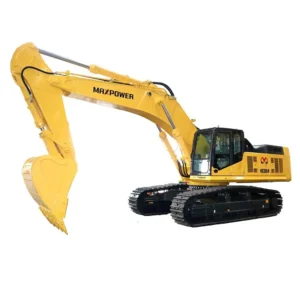

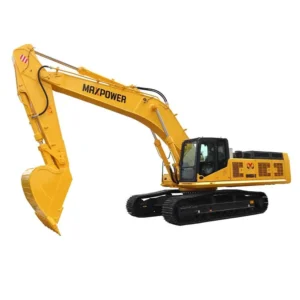
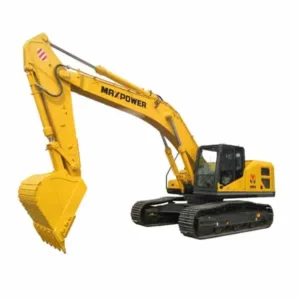
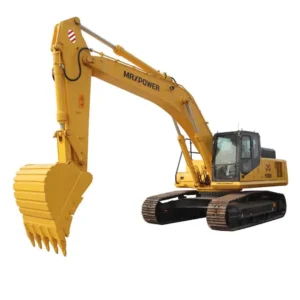
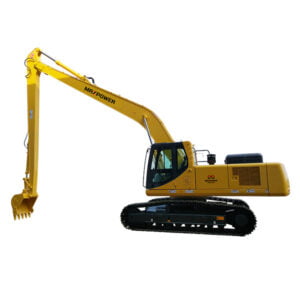
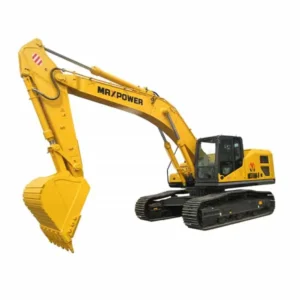







-150x150.webp)
